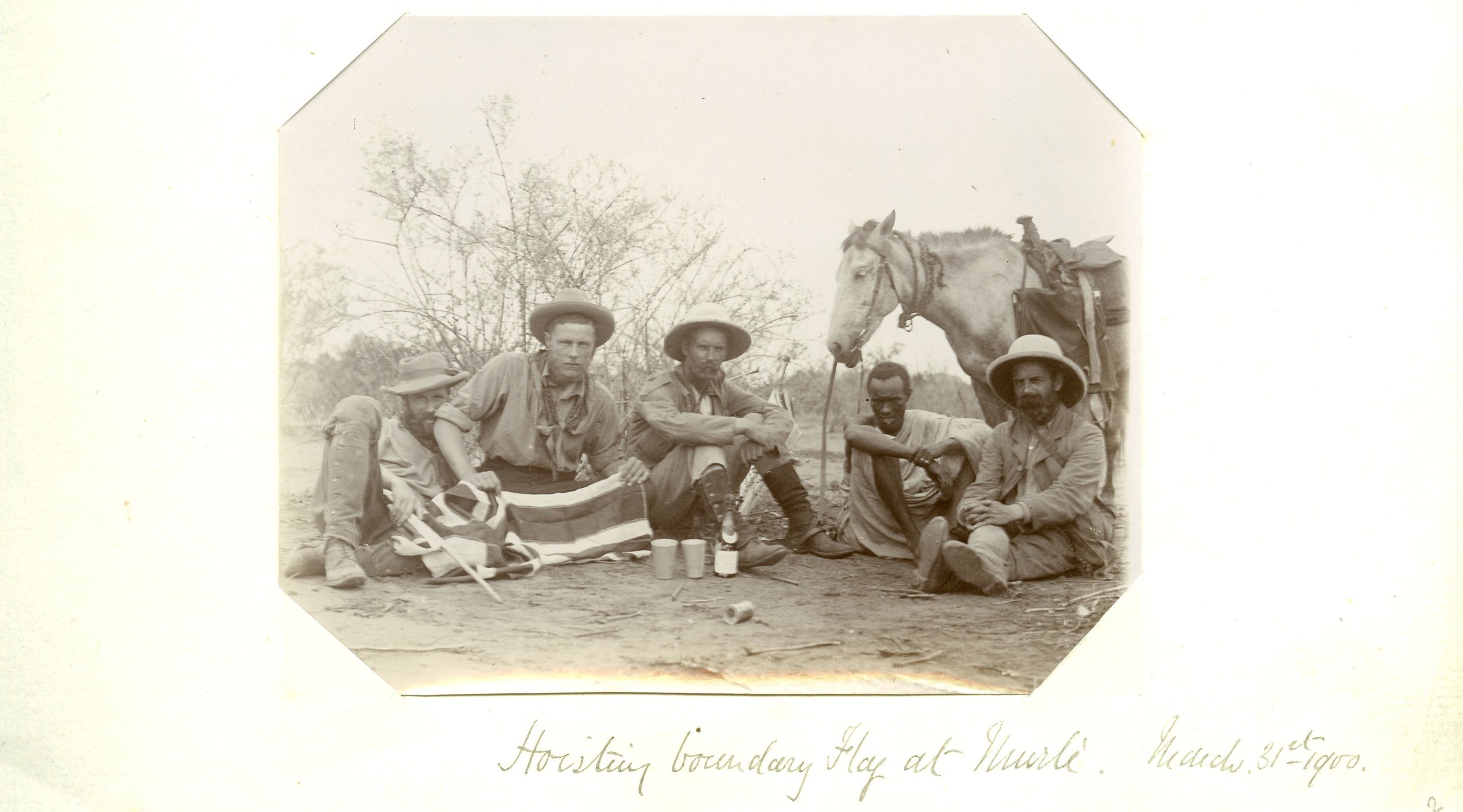
A Reflection on Harrison, Colonialism and the Congo
By Lynn Crosby
The Victorian era both in Britain and mainland Europe was the height of empire and imperialism and drew on an ideology which justified the plundering of lands under the pretext of the civilising influence of the white races. King Leopold II of Belgium was adept at this form of propaganda when he annexed what became the Free State of the Congo, claiming altruistic motives for his land grab. The fact that Europeans were able to conquer much of Africa was due to superior weaponry, used with little compassion, and not as a result of any moral or intellectual superiority.
Colonel J J Harrison © Scarborough Museums and Galleries
Harrison was a man typical of his class and time in his attitude to the Congo, which was one of entitlement to its resources including the labour of its indigenous people as porters. He had the money and leisure to spend on hunting big game and to bring home the animals as trophies. The Bambuti people hunted for food and took only what they needed. Game hunters, such as Harrison, had little regard for conservation and hunted some species such as the okapi, a forest giraffe, to near extinction., although Harrison himself never managed to track one down. He was wanton in the slaughter of animals and birds, as evidenced in his diaries. Very few Europeans at the time saw a problem with this, but by the end of the nineteenth century there were some voices raised against such destruction and the Convention for the Preservation of Wild Animals Birds and Fish in Africa was signed in May 1900, the first of its kind.
From left to right:
Mongonga, Princess Kuarke, Matuka, Mafutiminga, Amuriape, Chief Bokane. © Scarborough Museums & Galleries
In 1905 Harrison brought a group of the Bambuti people to his home in Yorkshire so that they could tour and ‘perform’. At the time it took Lord Lansdowne, a Conservative peer, to question the morality of this, but he decided he could not do more than arrange for medical examination and treatment when they stopped off in Egypt. Harrison had persuaded them to accompany him on the arduous journey across continents. They performed in musical hall settings across Britain and even met Queen Victoria. At times they were also subjected to physical intrusion and measured supposedly in the name of scientific enquiry. They were treated as an item of curiosity and the reports about them and their performances in the papers were overtly racist.
Although few voices were raised against this, there was already growing opposition to the regime in the Congo. There were people who for religious or humanitarian reasons, believed in the human rights of indigenous people. Charles Dilke, a member of the committee of the Aborigines Protection society which had been formed in 1837 to protect the rights of indigenous people who were subjected to colonial rule, was one of the first to heed the stories coming out of the Congo. He wrote an article in July 1896 which referenced “the ivory stealing,, the village burning, the flogging and the shooting that are going on in the heart of Africa now” .
Journalist Edmund D. Morel
E D Morel, a shipping clerk, noticed from shipping records that contrary to King Leopold's claims he was making vast profits in the Congo. Roger Casement at the foreign office began gathering evidence of atrocities, including forced labour on the rubber plantations and bodily mutilation, and reported to parliament in June 1904. Harrison, however, wrote a letter to The Times , denying the truth of this and in support of King Leopold. Morel subsequently formed the Congo Reform Association and began an international campaign. In 1906 The British Foreign Secretary, Sir Edward Grey, committed to supporting this aim. Leopold eventually sold the Free State to his own parliament, as he had claimed the country as his own. In 1913 the Congo Reform Association was disbanded, as its objectives were thought to have been fulfilled.
Felix Losing argues that the reformers saw the atrocities in the Congo as being particular to that regime, rather than the inevitable outcome of imperialism. They drew on the same images of darkest Africa as the colonisers and saw the indigenous people as being ‘rescued’ by the ‘more civilised’ white races. Attitudes may be changing but the idea of the benevolent white rescuer still remains, as was evidenced in some of the filming of Comic Relief in recent years and the general portrayal of Africa and its people in our museums. There is now a growing awareness of the cultural diversity of Africa and a willingness to listen to the diverse voices of its inhabitants past and present. It is something with which Local to Global Scarborough hopes to engage.
About the author
Lynn Crosby - grew up near Scarborough and always had an interest in history both local and global. She is particularly drawn to finding voices hidden from history.
References
Green, J. (1995) Edwardian Britain’s Forest Pygmies, History Today Vol 45, Issue 8, August 1995
Harrison Diaries (Copywrite Scarborough Museum Trust and Galleries)
Lindqvist, S. (2007) Exterminate All The Brutes, The New Press
Losing, F. (2020) A ‘Crisis of Whiteness’ in the ‘Heart of Darkness’: Racism and the Congo Reform Movement (Cultures of Society), Transcript Verlag
Pavlakis, D. (2010) The Development of British Overseas Humanitarianism and the Congo Reform Association , Journal of Colonialism and Colonial History, Vol. 11, Iss 1. Spring 2010
Wildlife and Colonisation: A History of Destruction and Protection of Congolese Nature (1885 to 1960)
